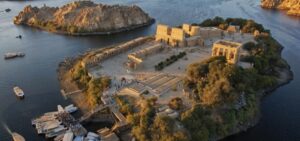Famous Ancient Egyptian Temples
.Karnak Temple
- The temple complex of Karnak is the largest religious building ever built, and was constructed over a span of 2,000 years. Construction started in the Old Kingdom and was continuously added to up until the Ptolemaic era, with approximately 30 different pharaohs contributing. It’s the second most visited site in Egypt after the Pyramids of Giza .
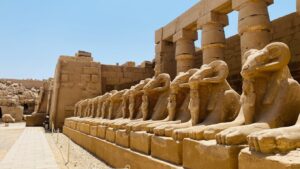
- Abu Simbel
- Abu Simbel is comprised of two massive rock temples, about 3 hours from Aswan. The twin temples were constructed in the 19th Dynasty of the New Kingdom as an everlasting monument to Ramses II and his Great Royal Wife Nefertari. The massive temples were relocated from their original spot in an international effort to save the ancient monuments from Nile flooding, and are one of Egypt’s 7 UNESCO World Heritage Sites.
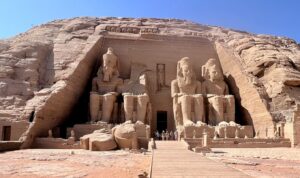
- Luxor Temple
- Constructed around 1400 BC (more than 3,400 years ago), Luxor Temple differs from most other ancient Egyptian temples due to the fact that it wasn’t built for worship of a particular god or pharaoh. It was mainly used as a place where pharaohs were coronated and crowned, sometimes even conceptually (for example, Alexander the Great claimed he was crowned there but no evidence suggests he was ever there).
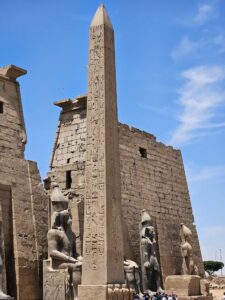
Mortuary Temple of Hatshepsut at Deir el Bahri
- Known primarily for the mortuary temple of the female pharaoh Hatshepsut of the New Kingdom, Deir el Bahri was originally chosen as the location for the mortuary temple of the pharaoh who founded the Middle Kingdom, Mentuhotep II. Hatshepsut’s temple though is the star of the show, and the massive terraced monument is surrounded by a steep cliff. It was in this cliff that archaeologists found a cache of royal mummies, moved in antiquity from the Valley of the Kings.
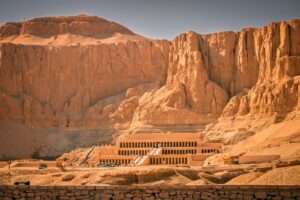
Kom Ombo
- Kom Ombo, about an hour’s drive from central Aswan, is an unusual double temple dating back to the Ptolemaic era. A ‘double’ temple means it has two sets of halls, sanctuaries and rooms dedicated to two different gods; in the case of Kom Ombo, the two gods were Sobek (the crocodile god) and Horus (the falcon god). Over 300 crocodile mummies were found at the site, and they’re now in the adjacent Crocodile Museum.
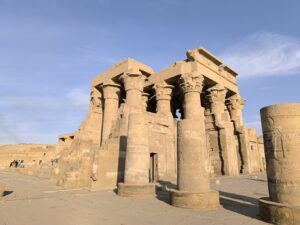
- Temple of Horus at Edfu
- Built during the Ptolemaic times, the Temple of Horus at Edfu (or Edfu Temple) is one of the best-preserved temples in all of Egypt. It’s also the largest temple dedicated to Horus. The wall inscriptions provided archeologists with important information about Ancient Egyptian religion and language during the Hellenistic/Ptolemaic era.
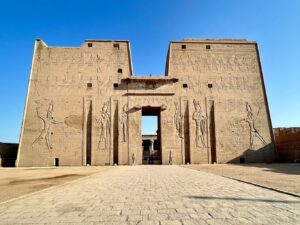
- Philae
- The temple complex at Philae was primarily built during Ptolemaic times, and finished during the Roman conquest. It’s known for being the last place where hieroglyphs were written, and the last place where the Ancient Egyptian religion was practiced. Christianity became present in Philae starting the 4th century, where it first was practiced alongside the Ancient Egyptian religion and then solely. Today you can see both the original Ancient Egyptian temples and the temples that were converted into churches.
